Let’s Stop Blaming 13 Reasons Why and Other TV Shows/Movies for Inciting Bad Behavior
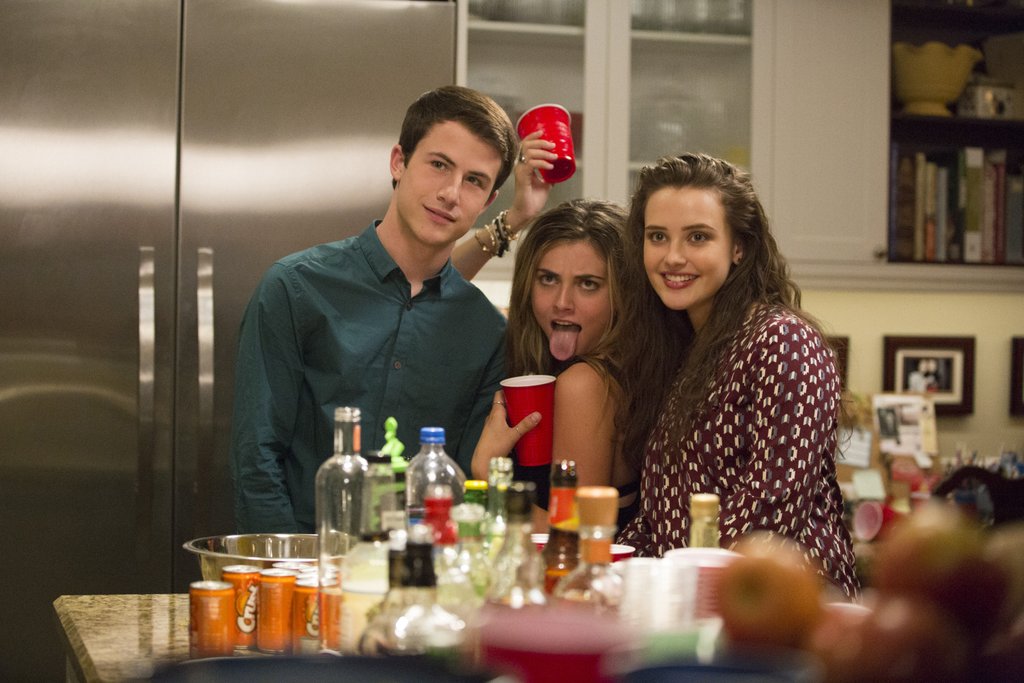
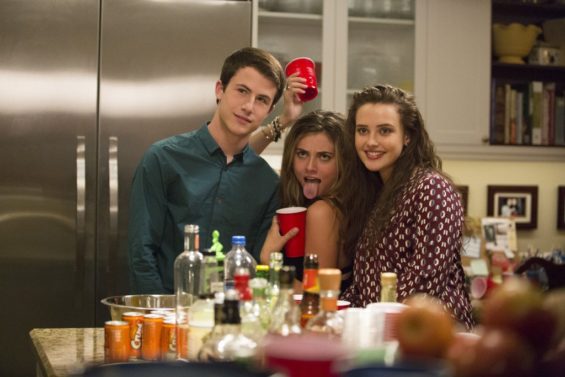
Photo courtesy of Netflix
Long before 13 Reasons Why, there was teen suicide. And decades before To the Bone premiered last month, eating disorders were an entrenched, if little discussed, part of Western culture. So why are these movies and shows now being blamed for copycat behavior?
To the Bone and 13 Reasons Why aren’t the root of bad behavior, any more than All in the Family caused widespread racism, The Sopranos encouraged a rush of Mob sign-ups and gelmut hair, Santa Clarita Diet inspired suburbanites to eat their neighbors, or GirlBoss strong-armed millennial women into becoming callous, brain cell-deficient, Dumpster-diving Mean Girls who trade their friendships for the merest whiff of money and notoriety. And what about the most obvious example of imitation, the 1995 serial-murderer thriller Copycat, which remains under the radar today, even after being named to several best-of lists?
We’ll get to what’s behind the drive to assign fault in a minute, but let’s start with this: it’s time for us to stop blaming TV shows and movies that frankly depict difficult subject matter as inspiration for copycat behavior.
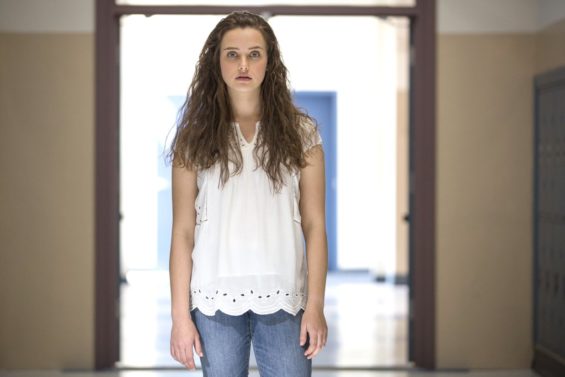
Photo courtesy of Netflix
I’m a huge YA fan—I even write YA fiction—but I’ll admit that the series version of 13 Reasons Why, which debuted this spring, is as deeply flawed, though in different ways, as its source material. Where the series, thanks to strong acting and direction, manages to turn characters who are dull or insufferable on the page into sympathetic, dimensional people, it’s great failing is not in glamorizing suicide, but in glamorizing teens physically. The teenagers of 13 Reasons Why, with the exception of nerdy peeping-Tom Tyler, are uniformly stunning and unblemished, effortlessly thin, perfectly coiffed, and lusciously lipglossed—no matter the time of day or situation. It’s hard to believe this squadron of Abercrombie models would be part of the unpopular crowd.
(This is not to say that pretty people don’t suffer from loneliness and depression; they do, and just as often as those who aren’t considered classically beautiful. But when I think back on my high school years, the kids who were subjected to wedgies and nipple tweaks, including yours truly, didn’t look like Katherine Langford and Dylan Minnette.)
What 13 Reasons Why excels at is depicting teens in a normal stage of mental and emotional development—with all its accompanying self-absorption, insecurity, desperation for approval, and distancing. The series truthfully shows what it’s like to feel alone even in a roomful of people (whether self-imposed or because of bullying), and doesn’t shy away from making its protagonists unlikeable, if never—not for more than a moment—ugly.
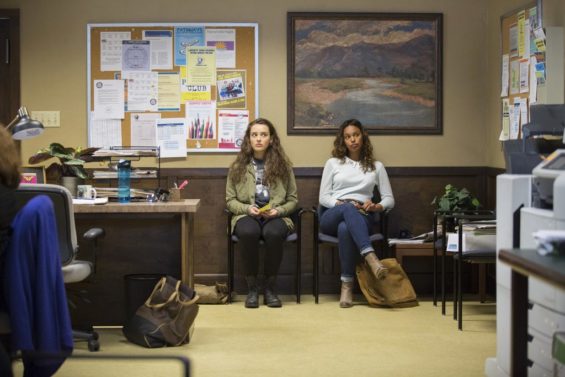
Photo courtesy of Netflix
The new Netflix movie To the Bone, which premiered on July 14, is currently suffering a similar public drubbing, with people of all stripes, whether they’ve seen it or not, lambasting it for glamorizing eating disorders. But I challenge anyone to explain how the pallid, bony, furry-armed, hollow-eyed “calorie savants” of this movie, who push their dinners around their plates like Zen monks raking a garden, compulsively do sit-ups in the middle of the night, get force-fed via tube when they won’t eat, or keep a secret barf stash under the bed could meet the description of glamorous. Though the film undercuts its own message by focusing too much on a romantic subplot and tacking on a simplistic ending, it does a good job of depicting the range of people who suffer from eating disorders (hint: it’s not just affluent white women) and their dizzying array of hush-hush, self-harming behaviors.
The biggest controversy drummed up by the film is that actress Lily Collins, who plays protagonist Ellen, is herself an eating disorder survivor and lost a lot of weight to play the role. While I disagree that there was any “healthy” way, as she and director Marti Noxon have said, for her to reduce herself to a slouching skeleton, Collins is an adult and has repeatedly insisted the idea was hers. She’s also great in the role, authentically capturing Ellen’s central conflict between wanting to be skinny and wanting a fully fleshed-out life.
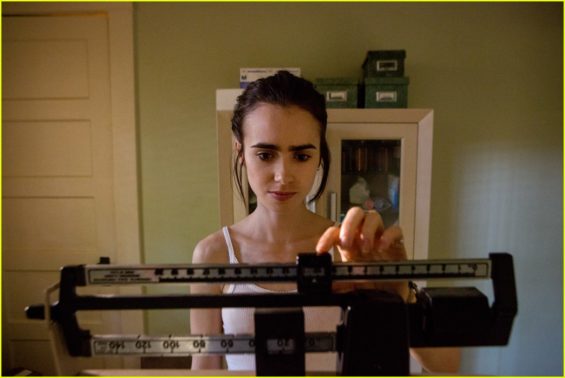
Photo courtesy of Netflix
When Christian Bale lost a whopping 60 pounds to play the lead in the largely throwaway 2004 thriller The Machinist, people were shocked, but marveled at his Method dedication. Yet Collins, who has done the same thing for a movie with an arguably more noble cause, is labeled unwell, and the movie unethical.
Now that the movie has been out for several weeks, the media can’t get enough of posting images of Collins in a bikini, while on beach vacation or even for a Shape cover story. Ostensibly, they’re applauding her for looking hot, fabulous, and healthy. But fixating on the appearance of an eating disorder sufferer is in many ways even more irresponsible than losing weight to play a role. While eating disorders often develop in an effort to exert control when life feels uncontrollable, many of those affected start down the slippery slope because they’ve been subjected to repeated public scrutiny of their appearance.
Is it possible To the Bone could be used by eating disorder sufferers as “thinspiration”? Absolutely. But the thousands of websites, blogs, and, before them, ’zines, dedicated to photos of women in lacy lingerie, ribs and clavicles protruding as if one hard bump against a doorframe might send them popping through the skin, alongside pearls of wisdom like “Nothing tastes as good as skinny feels” beat To the Bone to the punch long ago. If we’re going to point an accusatory finger at something, let’s turn it on Western culture’s insistence on the constant policing of women’s bodies.

Photo courtesy of Netflix
Much of the blame reaction, especially when a suicide is involved, can be traced directly to the intense pain families endure when one of their members suffers from an illness like depression or anorexia. They’re hurt, angry, sad, and confused, and may even feel abandoned. It’s natural to reject the notion that someone they loved felt circumstances were so bleak that they resorted to extreme behavior. These families often want to believe that something on the outside caused the problem, and, correspondingly, taking that something away could have fixed it.
This isn’t always the case. I’m not a medical professional, but I’ve known plenty of gymnasts and dancers with eating disorders, and I’ve read enough to understand that mental illness is insidious. At best, it’s a frequent struggle that’s managed through a lifetime of counseling and support, behavior modification, medication, or a combination of several modalities. At worst, it becomes the proverbial downward spiral that consumes the life of the afflicted person and those around him or her.
This doesn’t discount the range of experiences in between, or the difficulty families have in grappling with the ripple effect of mental illness. I can understand why a movie or TV show might seem like a compelling scapegoat; in an afflicted person, especially one on the edge of a major transition, these images and words can serve as triggers. But so can news reports and women’s magazines, and nobody’s talking about banning those. The sad fact is that people in the grip of such an illness might not need much, if any, inspiration to take a drastic step, and this alone doesn’t make fictionalized stories less legitimate.
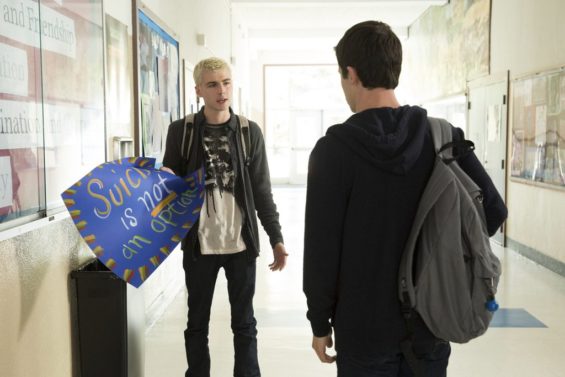
Photo courtesy of Netflix
There are other reason why these shows are being held up as examples. Art often walks the fine line between fantasy and reality; think of Philippe Halsman’s Dali Atomicus, where very real objects and living things—a chair, a water spill, a man, pets—appear to be suspended in space. When the art is too realistic or uncomfortable, we often rush to blame it for inspiring life, rather than the other way around. But just like Dali Atomicus didn’t inspire people everywhere to toss around cats and buckets of water, 13 Reasons Why and To the Bone aren’t responsible for self-harming behavior. They’re responsible for making it part of mainstream conversation.
What else do 13 Reasons Why and To the Bone have in common? For starters, they’re both produced by Netflix, which, over the past few years, has had a slew of successful films and series that have given cable networks a run for their money. This has led to some bitterness and trash-talking among traditional Hollywood studios. And both the film and the series, by necessity, truncate a complex subject into a bite-size piece of entertainment, so they cover only a portion of actual experience.
But beyond these criticisms—which can be aimed at Oscar winners and B movies alike—there’s another issue. To the Bone and 13 Reasons Why are dramas largely about and aimed at young women, which makes them easy pickings for critics and even average Joes who like to apply labels like dramatic, hysterical, lightweight, and over-the-top to stories by and about women. The real message is that entertainment for women and girls isn’t serious, valid, or worth watching.
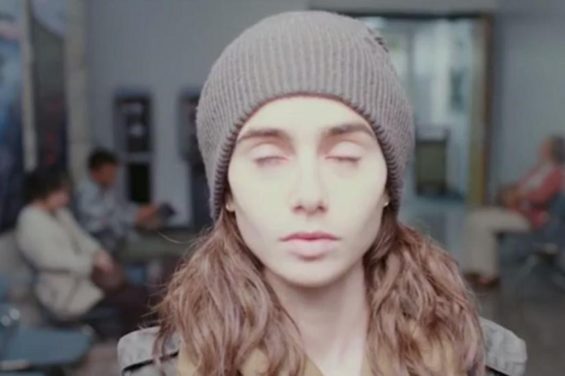
Photo courtesy of Netflix
I have my quibbles with both To the Bone and 13 Reasons Why, but they’re about the execution of the stories rather than the stories themselves. If “serious” stories about genocide (Schindler’s List, Hotel Rwanda), the atrocities of war (Apocalypse Now, Platoon), homicidal punks (A Clockwork Orange, Blade Runner), human trafficking (12 Years a Slave, The Whistleblower), mental illness in men (A Beautiful Mind, One Flew over the Cuckoo’s Nest), and other uncomfortable subject matter have a right to exist, without concern that they’ll cause copycat behavior, stories about young women struggling against mental illness have an equal right to be part of our cultural landscape. They may even do some good by making those afflicted feel less marginalized, and the rest of us more sensitive and aware.